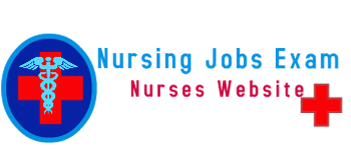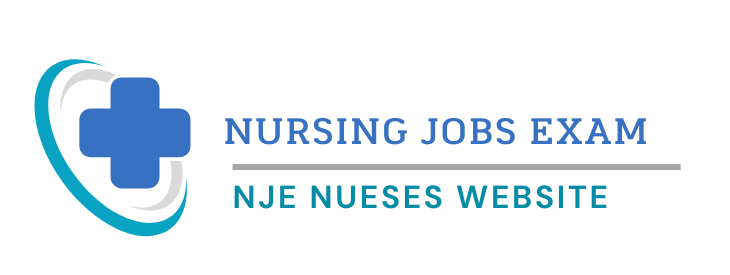Ventricular tachycardia is a dangerous tachyarrhythmia characterized by a series of three or more ventricular ectopic impulses (wide QRS complexes) at a rate of 100 or more beats per minute. Accelerated ventricular rhythm is defined as a ventricular rhythm occurring at 50–100 beats per minute. Identifying the rhythm is important. Accelerated ventricular rhythm usually indicates ischemic heart disease and antiarrhythmic treatment for this rhythm disturbance is not necessary. VT can be brief, subsiding within 30 seconds (nonsustained VT), or it can last for longer periods (>30 s) of time (sustained VT). The most frequent and the most likely cause of VT is myocardial ischemia or a recent myocardial infarction. Other organic heart diseases complicated by VT include aortic valve disease, cardiomyopathies and VT following coronary artery bypass surgery, particularly after aneurysmectomy or aneurysmorrhaphy of a ventricular aneurysm.
Ventricular Fibrillation
Ventricular fibrillation is characterized by irregular waveforms of varying duration, contour, amplitude without identifiable QRS and T-waves. VF (and pulseless VT) are akin to cardiac arrest and cause unconsciousness within seconds. Generalized seizures and agonal breathing follow; death occurs unless promptly diagnosed and treated.
In an ICU setting, VT can also occur in the absence of serious organic heart disease. It is important to look for potentially reversible factors, which may initiate or perpetuate serious ventricular arrhythmias. Important reversible conditions causing sustained VT have been listed.
These factors include hypoxia, hypercapnia, hypoglycemia, hypokalemia hypomagnesemia, hypocalcemia, excessive use of inotropes (catecholamines) or excessive endogenous catecholamine production, hyperthyroidism, drug toxicity. (commonly produced by antiarrhythmic drugs), digitalis toxicity and the presence of intracardiac catheters.
The initial workup should therefore include measurements of serum electrolytes, calcium, magnesium, arterial pH, blood gas analysis and cardiac enzymes. If the patient has an indwelling catheter, e.g. a Swan-Ganz catheter or a central venous line, it is important to check with an X-ray that it does not lie within the right ventricle.
Potentially reversible causes of ventricular tachycardia
1 Ischemic heart disease
2 Hypoxia/hypercapnia
3 Acidosis
4 Electrolyte abnormalities—Hypokalemia, hypocalcemia, hypomagnesemia
5 Hyperthyroidism
6 Excess of circulating catecholamines—Endogenous/exogenous
7 Drug toxicity—particularly digitalis
8 Presence of intracardiac catheters.
Management of Ventricular Tachycardia
Premature ventricular contractions (PVCs) and episodes of non-sustained VT have no immediate hemodynamic significance. Management consists of a proper assessment, identification and removal of factors that may contribute to these episodes. The risk of evolving into sustained VT increases if PVCs are very frequent, occur in pairs or triplets or exhibit the R on T phenomenon, particularly when this is observed in the ICU, against a background of ongoing myocardial ischemia, myocardial infarct or in patients with poor left ventricular function. Under these circumstances, and more so if frequent PVCs and ill-sustained episodes of VT appear to precipitate angina or hemodynamic instabilities, IV 150–300 mg of amiodarone given over 20 minutes, followed by an infusion of 750 mg amiodarone over 24 hours may well be justified. Oral amiodarone 200 mg TDS is started so as to overlap the IV infusion. Patients with ongoing ischemia or a recent infarct are often hyperadrenergic. Besides attending to reperfusion, beta-blockers given orally may also control frequent PVCs or frequent episodes of non-sustained VT. In general, however, non-sustained VT occurring in asymptomatic patients without underlying heart disease require no specific therapy.
Management of Sustained Ventricular tachycardia
Patients in severe hemodynamic failure and collapse characterized by marked hypotension, or acute heart failure, or patients who have pulseless VT, polymorphic VT, and VF should promptly receive unsynchronized electric shocks and advanced cardiac life support.
Direct current unsynchronized cardioversion should be given with an initial shock of 100 J followed by repetitive shocks of 200, 300 and 360 J if necessary. These critically ill patients would almost certainly die if not for prompt cardioversion and advanced cardiac life support (see chapter Cardiopulmonary Resuscitation and Cerebral Preservation in Adults).
👉 Any patient with a wide QRS complex tachycardia, who shows evidence of hemodynamic instability, should also be converted by DC cardioversion. One does not want a hemodynamic collapse in these patients before using cardioversion, which is considered the most effective form of therapy, to revert VT to sinus rhythm. IV midazolam or fentanyl need to be used as premedications.
👉 In patients with monomorphic VT who are hemodynamically stable, the intensivist needs to—
( A) Identify as far as possible arrhythmogenic factors that could trigger VT and sustain VT in a particular patient. The factors commonly present in critically ill patients are—
– Acid-base and electrolyte abnormality.
– Hypoxia, hypercapnia, hemodynamic abnormalities.
– Use of pro-arrhythmogenic drugs.
– A prolonged QT interval.
– Hyperadrenergic states. Use of inotropic drugs, like dopamine or dobutamine, which in some patients might induce VT even when not used in excess.
– An underlying myocardial infarct or active myocardial ischemia.
– Mechanical stimulation of the myocardium as by a central line within the right ventricle or a pulmonary artery catheter abutting against the wall of the right ventricle.
Treatment of arrhythmogenic factors outlined above in itself can terminate an arrhythmogenic episode or at least prevent its recurrence. In particular, stress should be given to correction of electrolyte imbalance, treatment of myocardial ischemia, discontinuation of drugs that prolong the QT interval and reducing or omitting drugs, which increase adrenergic stimulation or have an inotropic action. Repositioning a central venous pressure line or a misplaced pulmonary artery catheter may well abort an attack or prevent its recurrence.
(B) Decide on the method to revert the VT to sinus rhythm.
Both DC synchronized cardioversion and the IV administration of antiarrhythmic drugs are equal first-line options. Antiarrhythmic drugs are generally preferred as anesthesia is not necessary and their antiarrhythmic effects persist after the reversion of VT to sinus rhythm.
The antiarrhythmic drug of choice is amiodarone given in a dose of 5 mg/kg IV over 20 minutes followed by an IV infusion of 750 mg to 1 g over the next 24 hours. An IV infusion of 500–750 mg given over the next 2 to 3 days may be necessary. Oral amiodarone in a dose of 200 mg thrice daily is given as a preventive once the rhythm has reverted.
Amiodarone should also be administered to patients with sustained monomorphic VT who are refractory to conversion after electric shocks.
Lidocaine was the drug of choice for VT before the advent of amiodarone, which has by and large replaced lidocaine. However, even today in patients in whom stable monomorphic VT is associated specifically with unstable angina or myocardial infarction, lidocaine is considered by some authorities to be a reasonable initial choice.20 Lidocaine is administered in a bolus of 75 mg; a bolus of 50 mg may be repeated if necessary after 5 minutes. This is followed by an IV infusion of the drug at 1–2 mg/hour for continued control. The drug is metabolized by the liver and is avoided in patients with liver cell dysfunction. Lidocaine toxicity chiefly involves the central nervous system—drowsiness, agitation, confusion, muscle twitching and generalized seizures may occur. These are chiefly observed in elderly people or when larger doses are being used. The drug can also cause bradycardia, hypotension and sinus arrest. Liver cell dysfunction may also occur. The American College of Cardiology/American Heart Association/European Society of Cardiology (ACC/AHA/ESC) 2006 guidelines21 for the management of ventricular arrhythmias recognizes various drugs besides amiodarone and lidocaine. These drugs include procainamide, flecainide and propafenone. None of these drugs are easily available in our country and probably have no advantage over amiodarone and lidocaine. In Europe, IV procainamide is often used as the initial choice for patients with stable sustained monophasic VT. Procainamide when used is given at a rate of 20 mg/minute until the arrhythmia reverts or a total not exceeding 1,000 mg is administered. Hypotension and a prolonged QT are dangerous side effects. The prolonged QT can result in a drug-induced VT. Hypotension may necessitate stoppage of the drug. The drug is contraindicated in patients with a prolonged QT interval. We have stopped using this drug for several years; also, the drug is not easily available in the country.
Whenever one uses amiodarone or lidocaine or any other antiarrhythmic drug, it is now felt that the addition of a second antiarrhythmogenic drug should be discouraged as the proarrhythmic effects of two drugs are compounded. Thus, if the use of the single agent in optimal doses fails to revert VT, it is best to proceed to DC synchronized electrical cardioversion rather than use a second drug. Monophasic waveform electric shocks at an initial energy level of 100 J are generally effective. Comparable energy levels may be effective when using biphasic waveform electric shocks.
Transvenous over-drive spacing is also used for terminating monophasic VT if there is refractoriness to cardioversion or VT recurs despite the use of antiarrhythmic drugs.
(C) Transvenous over-drive spacing is also used for terminating monophasic VT if there is refractoriness to cardioversion or VT recurs despite the use of antiarrhythmic drugs.
(D) Ventricular arrhythmias with cessation of effective blood flow.
— As mentioned at the start, the patient should be immediately cardioverted using an unsynchronized DC shock—200 J from a defibrillator providing bi-wave form and 360 J if the defibrillator provides a monophasic wave form. Following shock delivery, the patient should receive prompt advanced cardiac life support according to the most recent guidelines for cardiopulmonary resuscitation and emergency cardiovascular care. A 1-shock strategy followed by prompt chest compression is now recommended to minimize interruption in chest compression. The shock is repeated every 3–5 minutes if VT or VF persists.
The following points are worthy of note—
👉T Survival after pulseless VT or VF is inversely related to the time elapsed between onset of arrhythmia and the delivery of electric shocks.23 The survival rate is high when duration of untreated VF is less than 4 minutes.
👉 With more protracted untreated VF, evidence suggests that a period of closed-chest resuscitation before attempting defibrillation could improve outcomes.
👉For patients with shock, refractory or pulseless VT, use of amiodarone may well improve chances of restoration of cardiac activity.
Electric storm is a highly lethal form of VT occurring chiefly during the course of myocardial infarction. Amiodarone, lidocaine, procainamide fail to secure a stable sinus rhythm. The VT also continues to recur again and again even after several DC shocks. The underlying mechanism seems to be related to excessive unbalanced sympathetic activity. It has been recently shown that sympathetic blockade, using IV beta-blockers or stellate ganglion blockade is successful in restoring a stable sinus rhythm, thereby dramatically improving the outcome.





